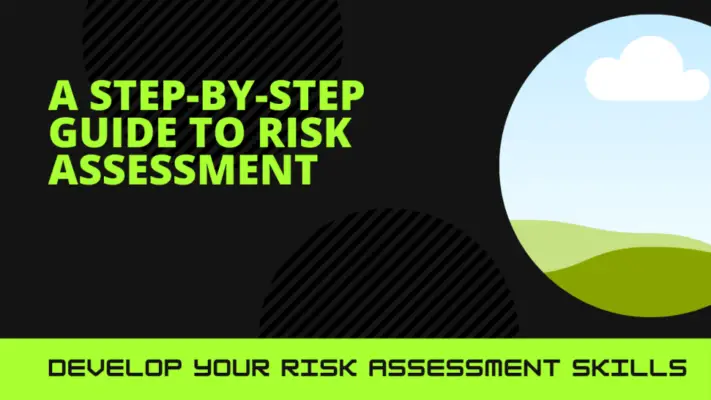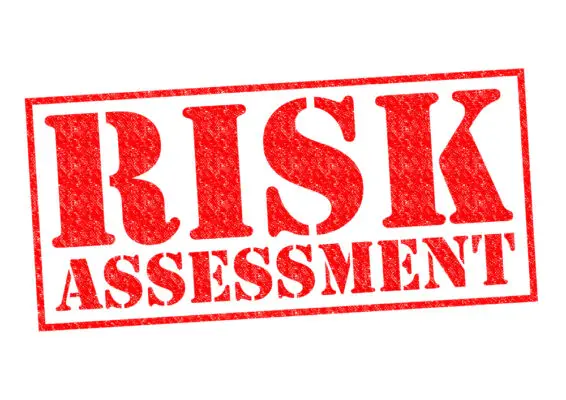Risk assessment is an essential process for organizations to identify potential hazards and evaluate the level of risk associated with them. Many organizations use risk assessment templates to monitor risk levels to ensure a comprehensive and systematic approach to risk assessment.
These templates provide a structured framework for conducting assessments and documenting the findings. A risk assessment template is a pre-designed document that outlines the key steps and considerations involved in assessing risks.
It includes identifying hazards, evaluating the likelihood and severity of potential consequences, and determining appropriate control measures.
Organizations can use a template to ensure consistency and standardization in their risk assessment process. Conducting risk assessments using templates offers several advantages.
It helps organizations save time and effort by providing a ready-made framework that covers all necessary aspects of risk assessment. Additionally, templates can be customized to meet specific organizational needs and requirements.
This article explores the importance of risk assessment, the benefits of using templates for conducting assessments, and provides insights into creating effective risk assessment reports.
It also discusses project-specific risk assessment form templates, which can aid in identifying and managing risks in specific projects.

What is a Risk Assessment Template?
A risk assessment template is a tool used to evaluate potential risks and hazards in a given situation or environment. Physical risk and risk rating of hazardous substances especially persons at risk.
Several risk assessment templates exist, including qualitative, quantitative, generic, site-specific, and dynamic.
Qualitative risk assessment involves the subjective evaluation of risks based on their likelihood and potential impact, while quantitative risk assessment uses measurable data to assign numerical values to risks.
Generic risk assessment templates are designed to apply to various scenarios, while site-specific risk assessment templates are tailored to a specific location or project.
Finally, dynamic risk assessment templates are continuously updated and revised as new risks emerge, circumstances change, or risk events.
1. Qualitative Risk Assessment
Utilizing a qualitative risk assessment approach allows organizations to evaluate potential risks based on the likelihood of occurrence and the potential impact on the project or business.
This method involves assigning risk levels and ratings to identified risks. A qualitative risk assessment template provides a structured framework for this evaluation process. It typically includes a 2-column and 5-row table that allows organizations to assess risks based on predefined criteria such as likelihood and impact.
The table helps organize and categorize according to their risk severity, enabling the organization to prioritize and develop an implementation plan to mitigate or manage them.
Organizations can make informed decisions and take appropriate actions to minimize potential threats to their projects or businesses by considering the potential impacts of each risk. Severity of risks especially security risks and common hazards with safety controls.
2. Quantitative Risk Assessment
In a quantitative risk assessment, organizations employ statistical models and data analysis techniques to quantify and measure risks’ potential impact and likelihood, providing a more precise and numerical understanding of the potential threats to the project or business.
This approach uses risk assessment templates and follows a structured risk management process.
The following four items outline the key components of a quantitative risk assessment:
1. Risk Identification: This step involves identifying and documenting all possible risks that could impact the project or business.
2. Risk Analysis: Organizations use a risk analysis template to assess each identified risk’s probability and potential impact.
3. Risk Matrix: A risk matrix prioritizes risks based on severity and likelihood, helping organizations allocate resources effectively.
4. Risk Mitigation Strategy: After assessing the risks, organizations develop a risk mitigation strategy to reduce or eliminate the potential impact of high-priority risks.
Organizations can use quantitative risk assessment to make informed decisions and develop effective risk management strategies through data and statistical analysis.
3. Generic Risk Assessment
Conducting a generic risk assessment involves systematically identifying and analyzing potential threats to a project or business without relying on standardized assessment tools or templates.
Unlike a basic risk assessment template, which provides a structured framework for evaluating risks, a generic risk assessment allows for more flexibility and customization. This approach allows organizations to tailor the assessment process to their needs and circumstances.
Although using risk assessment tools can enhance the efficiency and accuracy of the assessment process, a generic risk assessment does not depend on any specific tool or software.
Instead, it relies on qualitative risk assessments, evaluating risks based on their likelihood and potential impact.
The results of a generic risk assessment are typically documented in a risk assessment report, which may include a complimentary risk assessment template or a customizable risk assessment form for future use.
4. Site-Specific Risk Assessment
One method for evaluating potential threats to a project or business is through a site-specific risk assessment, which focuses on identifying and analyzing risks specific to the location or environment in which the project or business operates.
This type of risk assessment is particularly useful when dealing with complex or unique situations that generic risk assessment templates may not adequately address.
A site-specific risk assessment typically involves the following steps:
1. Identification of potential hazards: This step involves conducting a thorough analysis of the site and identifying any potential hazards that could pose a risk to the project or business.
2. Assessment of vulnerabilities: Once the hazards have been identified, the next step is to assess the vulnerabilities of the project or business to those hazards. This involves evaluating the potential impact and likelihood of each hazard occurring.
3. Analysis of consequences: In this step, the consequences of each identified hazard are analyzed in terms of their potential impact on the project or business. This includes considering both the direct and indirect consequences.
4. Development of risk mitigation strategies: Based on analyzing hazards, vulnerabilities, and consequences, appropriate risk mitigation strategies are developed to minimize or eliminate the identified risks.
Through conducting a site-specific risk assessment, businesses and projects can comprehensively understand their risks and implement strategic measures to minimize them.
Taking these measures can contribute to the security and prosperity of the project or business within its designated surroundings.
5. Dynamic Risk Assessment
Implementing a dynamic risk assessment approach allows businesses and projects to adapt and respond to changing conditions and uncertainties continuously. This method goes beyond the traditional static risk assessment, often conducted at the beginning of a project, and remains unchanged throughout its duration.
Dynamic risk assessment involves reviewing and reassessing potential risks and hazards, considering new information and circumstances.
By doing so, organizations can identify emerging risks, assess their severity, and implement appropriate mitigation control measures. This proactive approach ensures that safety hazards are identified and addressed promptly, reducing the likelihood of accidents or incidents.
The table below illustrates the importance of dynamic risk assessment by comparing its benefits with static risk assessment templates.
| Dynamic Risk AssessmentStatic Risk Assessment Templates | |
|---|---|
| Allows adaptation to changing conditions and uncertainties | Remains unchanged throughout the project |
| Identifies emerging risks | Does not consider new information |
| Assesses risk severity | Lacks depth in evaluating potential hazards |
| Promotes proactive risk mitigation | Reactive approach to addressing risks |
| Reduces likelihood of accidents or incidents | May not adequately address safety hazards |
To ensure the safety and well-being of employees, an action plan should be developed that includes clear guidelines on the use of protective equipment. This may involve providing employees with appropriate gear such as helmets, gloves, goggles, or masks, depending on the nature of the work.
Regular training sessions should also be conducted to educate employees on the importance of using protective equipment correctly and address any concerns or questions.
Government regulations play a crucial role in ensuring workplace safety. Businesses need to stay updated on the latest regulations in their industry and comply with them to avoid penalties and protect their employees.
These regulations may cover fire safety, hazardous substance handling, noise control, or ergonomic standards. Regular audits and inspections should be conducted to identify any gaps in compliance and take necessary actions to rectify them.
Identifying and assessing risks by type is essential in developing a comprehensive safety plan. Risks can be categorized into different types such as physical, chemical, biological, or ergonomic hazards. This may involve implementing engineering controls, administrative controls, or personal protective equipment, depending on the nature of the risk.
It is also important to consider the specific needs and risks associated with each business unit or department. Different units may have unique hazards and requirements that need to be addressed. Tailoring safety protocols to address these needs can help ensure that all employees are adequately protected.
Hardware failure is another risk that businesses should be prepared for. In today’s digital age, many businesses rely heavily on technology and machinery to carry out their operations. Hardware failures can disrupt workflow, cause data loss, or pose physical employee risks.
Regular maintenance schedules, backups, and contingency plans can help minimize the impact of hardware failure and ensure business continuity.
Developing a strong foundation for workplace safety involves establishing key terms and definitions that are understood and used consistently across the organization. This ensures clear communication and understanding among employees and helps to prevent any confusion or misinterpretation of safety guidelines.
When assessing risks, it is important to consider the potential severity of each risk. Some risks may have a higher likelihood of occurrence but lower potential severity, while others may have a lower likelihood but higher potential severity.
Prioritizing risks based on their potential severity can help businesses allocate resources effectively and focus on addressing the most critical risks first.
Ultimately, integrating safety measures into everyday business activities is crucial. Safety should be a core value embedded in the company culture and reflected in all aspects of operations.
Regular safety training, ongoing risk assessments, and open communication channels are key to ensuring that safety remains a top priority and that all employees are actively involved in maintaining a safe work environment.
Importance of Conducting an Assessment
Evaluating potential risks through a comprehensive assessment is crucial for organizations to proactively identify and mitigate potential threats to their operations and ensure the safety of their stakeholders.
Conducting an assessment using risk assessment templates allows organizations to systematically analyze and evaluate the risks associated with their activities, processes, or projects.
This structured approach ensures that all potential risks are considered and no crucial aspects are overlooked.
Through an assessment, organizations can comprehensively understand their risks, prioritize them according to their potential impact, and formulate efficient risk management strategies and contingency plans.
Furthermore, assessments enable organizations to comply with regulatory requirements, demonstrate due diligence, and enhance their overall risk management capabilities.
The importance of conducting a risk assessment cannot be overstated, as it provides organizations with the necessary insights to make informed decisions and safeguard their operations.

Reasons You Should Perform In-house Operational Risk Assessments
Conducting in-house operational risk assessments allows organizations to gain valuable insights into potential vulnerabilities within their internal processes and systems, ultimately empowering them to identify and address operational inefficiencies and improve overall performance proactively.
Organizations can perform in-house assessments to tailor risk assessment templates to their needs, ensuring a comprehensive evaluation of their unique operational risks.
This approach also fosters a deeper understanding of the organization’s risk landscape, as employees are intimately familiar with the day-to-day operations and intricacies of the business.
Additionally, conducting assessments in-house promotes a culture of risk awareness and responsibility as employees become actively involved in the risk management process. This strengthens the organization’s risk management capabilities, enhances operational resilience, and promotes continuous improvement.
Performing in-house operational risk assessments is a strategic approach that helps organizations effectively mitigate risks and optimize operational performance.
| Reasons to Perform In-house Operational Risk Assessments | Benefits |
|---|---|
| Tailored evaluation of unique operational risks | Comprehensive understanding of risk landscape |
| Promotes risk awareness and responsibility | Strengthens risk management capabilities |
| Enhances operational resilience | Promotes continuous improvement |
Creating a Report with Risk Assessment Templates
Creating a report using pre-designed tools can streamline the process of analyzing potential vulnerabilities and identifying areas of improvement within an organization’s internal processes and systems.
Risk assessment templates provide a structured framework for comprehensively evaluating various business risks. These templates offer a standardized format that ensures consistency and allows for easy comparison across different assessments.
Organizations can use these templates to effectively document and assess their risk exposure, allowing them to prioritize and address the most significant areas of concern.
Furthermore, these templates are contextually relevant, as they can be customized to suit specific industries or regulatory requirements.
Using risk assessment templates saves time and effort and enhances the overall effectiveness of the risk assessment process, aiding in identifying and mitigating compliance risks.
Project Risk Assessment Form Templates
Project risk assessment form templates provide a structured and standardized approach for organizations to evaluate potential risks and uncertainties associated with their projects, enabling them to make informed decisions and allocate resources effectively.
These templates typically consist of questions or statements about various risk factors, such as project scope, schedule, budget, and stakeholders. Organizations can systematically identify and prioritize risks by answering these questions or rating the statements, assessing their potential impact and likelihood, and developing appropriate mitigation strategies.
Project risk assessment form templates promote consistency and comparability across different organizational projects. It also facilitates communication and collaboration among project stakeholders, as they can easily understand and discuss the identified risks and mitigation measures.
These templates improve the risk management process and help projects to be completed.
| Risk Factor | Rating Scale | Risk Rating |
|---|---|---|
| Low, Medium, and High | Low, Medium, and High | |
| Project Schedule | Low, Medium, and High | |
| Project Budget | Low, Medium, and High | |
| Stakeholder Impact | Low, Medium, High | |
| Other Factors | Low, Medium, High | |
Frequently Asked Questions
Are there any legal requirements for using risk assessment templates?
Legal requirements for using risk assessment templates may vary depending on the jurisdiction and industry. It is important to consult relevant laws, regulations, and standards to ensure compliance with legal obligations and to provide a comprehensive risk management framework.
Can risk assessment templates be customized to suit specific industries or organizations?
Risk assessment templates can be customized to suit specific industries or organizations by incorporating industry-specific risks, control measures, and evaluation criteria.
This ensures the risk assessment process is tailored to address different sectors and organizations’ unique needs and requirements.
What are the common challenges faced when conducting a risk assessment?
Common challenges faced when conducting a risk assessment include identifying and assessing all potential risks, gathering and analyzing relevant data, ensuring objectivity and accuracy in the assessment process, and effectively communicating the findings to stakeholders.
How often should risk assessments be conducted using templates?
Risk assessments should be conducted using templates regularly, as they provide a standardized and efficient approach. The frequency of assessments depends on factors such as industry regulations, organizational policies, and the specific nature of the risks involved.
Are there any best practices or guidelines for using risk assessment templates effectively?
Best practices and guidelines for using risk assessment templates effectively include: ensuring templates are comprehensive and tailored to specific risks, regularly reviewing and updating templates, involving relevant stakeholders, and considering the limitations of templates.

Conclusion
Risk assessment templates are essential tools for conducting thorough and organized assessments of potential risks in various areas of operation. These templates help identify potential hazards, evaluate their likelihood and impact, and develop strategies to mitigate or manage them.
Organizations can use these templates to assess and address risks systematically, which helps ensure the safety and security of their operations. Conducting risk assessments is highly important as they help prevent accidents, minimize financial losses, and ensure compliance with regulations.
Risk assessment templates are useful tools for organizations to manage risks and safeguard their interests.

Chris Ekai is a Risk Management expert with over 10 years of experience in the field. He has a Master’s(MSc) degree in Risk Management from University of Portsmouth and is a CPA and Finance professional. He currently works as a Content Manager at Risk Publishing, writing about Enterprise Risk Management, Business Continuity Management and Project Management.

